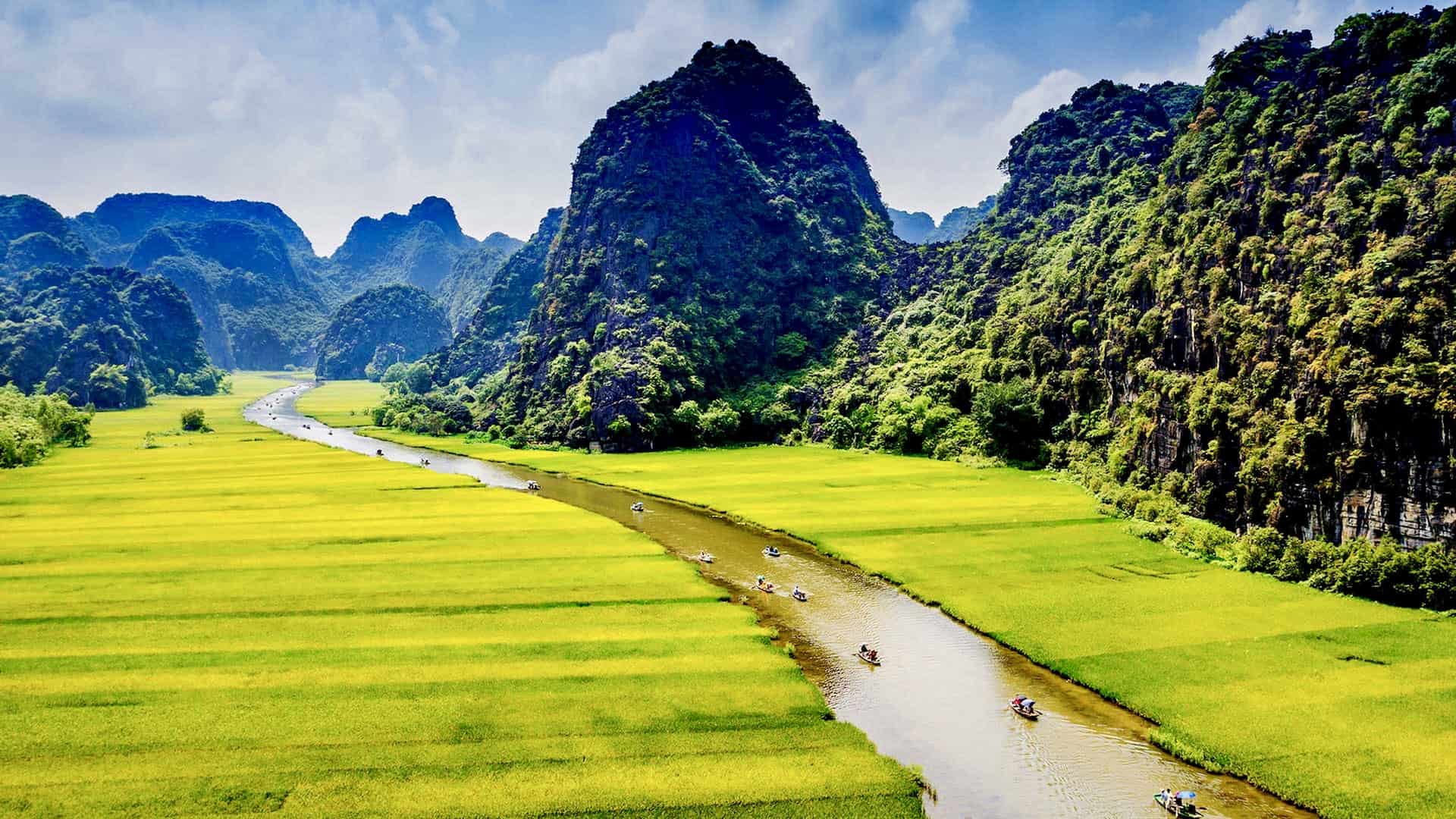
Vietnam UNESCO Sites: The Ultimate Guide to the Heritage of Humanity
Vietnam is a country with a rich and diverse cultural and natural heritage. The country has eight sites that are recognized by UNESCO as World Heritage Sites, which represent the outstanding universal value of humanity. These sites include natural wonders, ancient citadels, historic towns, and religious sanctuaries. In this article, we will explore the beauty and significance of these Vietnam UNESCO Sites, and why you should visit them at least once in your lifetime.
1. Natural Heritage Sites
Vietnam is blessed with a rich and diverse natural heritage. That includes two sites that are recognized by UNESCO as World Heritage Sites for their outstanding universal value. These sites are Phong Nha – Ke Bang National Park and Ha Long Bay – Cat Ba Archipelago. Both of them are located in the North Central Coast region of Vietnam. Let’s take a closer look at these amazing natural wonders and what makes them so special.
1.1. Ha Long Bay – Cat Ba Archipelago
Ha Long Bay – Cat Ba Archipelago is a stunning seascape of limestone pillars, islands, and arches that rise from the emerald waters of the Gulf of Tonkin. The site covers an area of 434,000 hectares and includes over 1,600 islands and islets. Many of them are uninhabited and untouched by humans. The site features a variety of marine and coastal habitats, such as coral reefs, mangroves, seagrass beds, and sandy beaches. The site is also rich in cultural and historical values. Indeed, it contains many archaeological sites, fishing villages, and monuments that reflect the long history of human interaction with the natural environment.
UNESCO first inscribed Ha Long Bay – Cat Ba Archipelago on the World Heritage List in 1994 for its aesthetic value. Later, it was extended in 2023 to include the Cat Ba Archipelago, which is the largest limestone archipelago in Vietnam. It hosts many endemic and threatened species, such as the Cat Ba Langur, the Golden-headed Langur, and the Cat Ba Leopard Gecko.
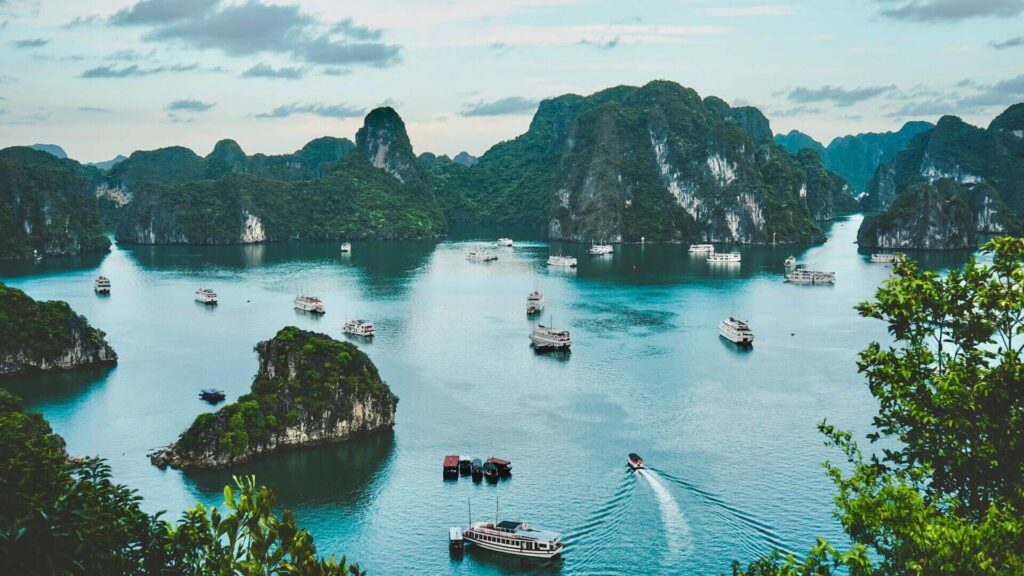
Activities and Attractions in Ha Long Bay – Cat Ba Archipelago
Ha Long Bay – Cat Ba Archipelago is a dream destination for many travelers, who want to experience the beauty and serenity of this natural wonder. Here are some of the activities and attractions that you can enjoy in the site:
- Cruising on a junk boat and admiring the scenery of Ha Long Bay – Cat Ba Archipelago. You can choose from different types of boats, such as luxury, budget, or traditional. There are enjoyable services and facilities on board, such as meals, drinks, entertainment, and spa.
- Kayaking or canoeing around the islands and islets, and discovering the hidden caves and lagoons. You can also snorkel or dive to see the colorful coral reefs and marine life. Or you can swim and relax on the sandy beaches.
- Hiking or biking on Cat Ba Island, which is the largest island in the archipelago and a national park. You can explore the diverse landscapes, such as forests, mountains, valleys, and waterfalls. You can also encounter some of the endemic and endangered species mentioned above.
- Visiting the fishing villages and floating markets and learning about their lifestyle and culture. You can see how the locals live on the water, fish, farm, trade, and worship. Don’t forget to also join them in some of their activities, such as cooking, fishing, or pearl farming.
How to Book the Best Tours and Cruises to Ha Long Bay
Are you ready to experience the beauty and wonder of Ha Long Bay, one of the most spectacular natural sites in the world? If so, don’t miss this opportunity to book the best tours and cruises to Ha Long Bay. There is a wide range of options for every budget and preference, from day trips to overnight stays, from luxury to budget, and from kayaking to swimming. You will enjoy the stunning scenery of limestone islands, caves, and beaches, as well as the rich culture and history of the local people. You will also have the chance to try some of the delicious seafood and local specialties of Ha Long Bay. Don’t wait any longer, book your Ha Long Bay tour today and get ready for an unforgettable adventure at one of Vietnam UNESCO sites.
1.2. Phong Nha – Ke Bang National Park
Phong Nha – Ke Bang National Park is a karst paradise, with hundreds of caves and grottoes that have been formed over millions of years. The park covers an area of 123,326 hectares and contains seven different types of ecosystems, ranging from tropical forests to wetlands. Particularly, the national park is home to many rare and endangered species. The park also boasts some of the most spectacular and scientifically significant caves in the world. To illustrate, the Phong Nha Cave, which is the longest wet cave in the world, and the Son Doong Cave, which is the largest cave in the world by volume.
UNESCO inscribed Phong Nha – Ke Bang National Park on the World Heritage List in 2003 for its geological and geomorphological values. It was extended in 2015 to include more areas of karst formation and biodiversity.
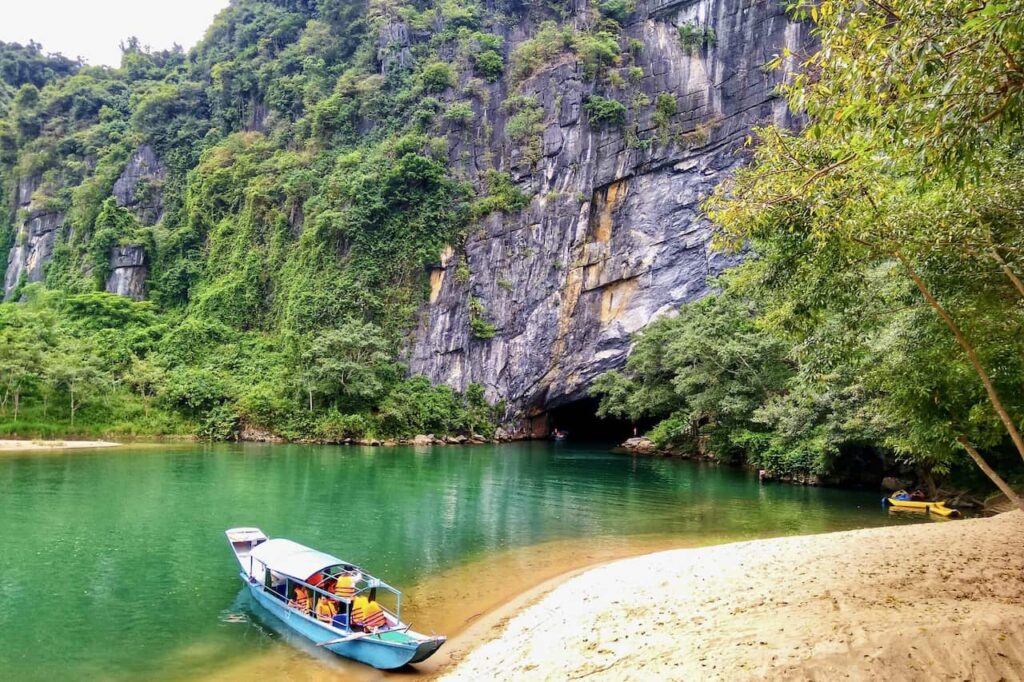
Activities and Attractions in Phong Nha – Ke Bang National Park
If you are looking for an adventure, Phong Nha-Ke Bang National Park is the perfect place for you. Here are some of the activities and attractions that you can enjoy in the park:
- Exploring the caves and grottoes by boat, kayak, or trekking. Some of the most popular caves are Phong Nha Cave, Paradise Cave, Dark Cave, and Son Doong Cave, which offer different experiences and challenges for adventurers.
- Ziplining over the Chay River and enjoying the mud bath in Dark Cave. This is a fun and thrilling activity that combines speed, height, and water.
- Camping and staying overnight in the jungle or in the caves. This is a unique opportunity to immerse yourself in the natural beauty and tranquility of the park, as well as to observe the wildlife and the stars.
- Visiting the local villages and learning about their culture and history. Some of the villages are located inside the park. To illustrate, Phong Nha Village and Son Trach Village, and some are nearby, such as Tan Hoa Village and Phuc Trach Village. You can interact with the friendly locals, taste their delicious food, and see their traditional crafts.
How to Book the Best Tours to Phong Nha – Ke Bang National Park
Are you ready to discover the wonders of Phong Nha – Ke Bang National Park, one of the most amazing Vietnam UNESCO natural sites in the world? If so, you should book the best tours and activities to Phong Nha – Ke Bang National Park. There is a variety of options for every taste and preference, especially boat rides to explore the caves. You will enjoy the stunning scenery of limestone karst mountains, valleys, caves, and rivers, as well as the rich biodiversity and history of the park. You will also have the opportunity to try some of the local delicacies and specialties, such as banh gai, banh te, or nem chua. Don’t miss this chance to book your Phong Nha – Ke Bang National Park tour today and get ready for an unforgettable experience at one of Vietnam UNESCO sites.
2. Cultural Heritage Sites
Vietnam is a country with a long and rich history, which is reflected in its cultural heritage sites. These sites showcase the diversity and creativity of the Vietnamese people, as well as their interactions with other cultures and civilizations. Some of the most outstanding cultural heritage sites in Vietnam are:
2.1. Complex of Huế Monuments
The Complex of Huế Monuments is a remarkable ensemble of historic and cultural monuments that represent the glory and decline of the Nguyen Dynasty, the last feudal dynasty of Vietnam. The monument covers an area of 544 hectares and includes the Imperial City, the royal tombs, the pagodas, and the temples. The complex reflects the influences of both Vietnamese and French cultures, as well as the traditions of Buddhism, Confucianism, and Taoism. Besides that, the complex is a testimony to the political, religious, and artistic development of Vietnam from the 17th to the 20th centuries.
UNESCO inscribed the Complex of Huế Monuments on the World Heritage List in 1993 for its cultural and historical values.
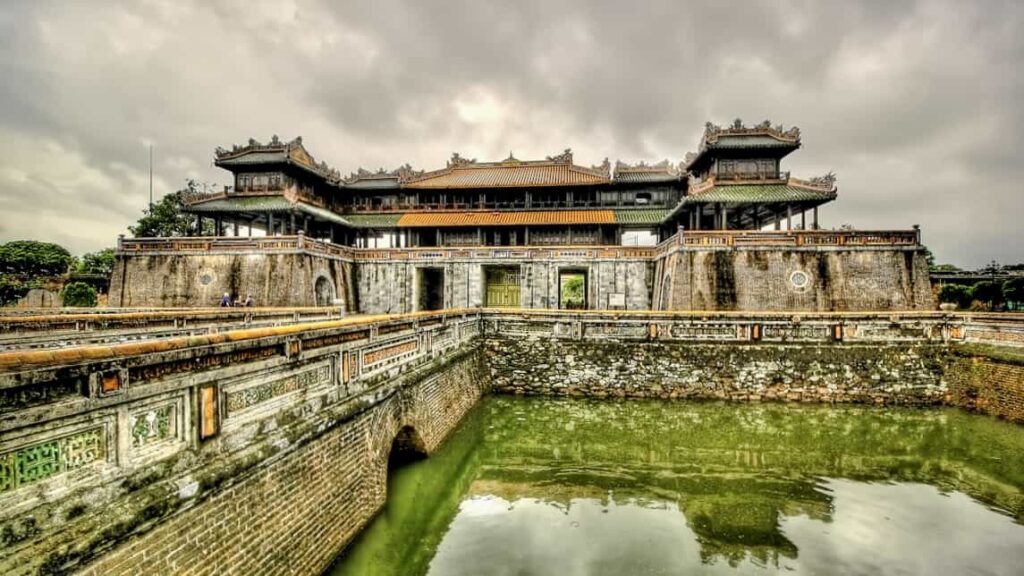
Activities and Attractions in Complex of Huế Monuments
This site is the former imperial capital of Vietnam. It’s where you can admire the splendid architecture and culture of the Nguyen Dynasty. Some of the activities and attractions that you can enjoy here are:
- Visiting the Imperial City. It is the core of the complex, where you can see the royal palaces, temples, gardens, and museums. You can also see the famous Ngo Mon Gate, the Thai Hoa Palace, the Forbidden Purple City, and the Nine Dynastic Urns.
- Exploring the royal tombs located along the Perfume River. It’s where you can see the mausoleums and monuments of the Nguyen emperors, such as Gia Long, Minh Mang, Thieu Tri, Tu Duc, Dong Khanh, and Khai Dinh. Each tomb has its own style and features, reflecting the personality and reign of the emperor.
- Taking a boat ride on the Perfume River. That offers a scenic and relaxing way to see the complex and the surrounding landscape. You can also stop at some of the pagodas and temples along the river, such as the Thien Mu Pagoda, the Hon Chen Temple, and the Bao Quoc Pagoda.
- Joining a cultural tour, where you can experience the traditional life and customs of the Hue people. You can learn how to make some of the local specialties. Those delicacies are bun bo hue (beef noodle soup), banh beo (steamed rice cake), or com hen (rice with baby clams). You can also participate in some of the folk games, such as bamboo pole dancing, tug of war, or blindfolded pot smashing.
How to Book the Best Tours and Activities to the Complex of Huế Monuments
Are you fascinated by the history and culture of the Nguyen Dynasty, the last royal dynasty of Vietnam? Do you want to see the magnificent architecture and landscape of the former imperial capital of Hue? If so, you should book the best tours and activities to the Complex of Huế Monuments. You will enjoy the splendid scenery of the Perfume River, the Imperial City, the royal tombs, the pagodas, and the temples. You will also learn about the history and culture of the Nguyen Dynasty and the Vietnamese people, as well as their traditions and customs. Don’t miss this chance to book your Complex of Huế Monuments tour today and get ready for an amazing experience at one of Vietnam UNESCO sites.
2.2. Hoi An Ancient Town
Hoi An Ancient Town is an exceptionally well-preserved example of a Southeast Asian trading port dating from the 15th to the 19th century. Its location is on the banks of the Thu Bon River, in the Quang Nam province, central Vietnam. In fact, Hoi An was a major international port that attracted merchants from countries such as Japan, China, France, India, and Holland. The town reflects a fusion of indigenous and foreign cultures, both in its architecture and its street plan.
Hoi An town comprises a well-preserved complex of over 1,000 timber frame buildings, with brick or wooden walls. Those include architectural monuments, commercial and domestic structures, such as an open market, a ferry quay, and religious buildings, such as pagodas and family cult houses. The houses are tiled and the wooden components are carved with traditional motifs. They are arranged side by side in tight, unbroken rows along narrow pedestrian streets. There is also the fine wooden Japanese bridge, with a pagoda on it, dating from the 18th century.
The original street plan, which developed as the town became a port, remains. It comprises a grid of streets with one axis parallel to the river and the other axis of streets and alleys set at right angles to it. Typically, the buildings front the streets for convenient customer access. Whereas, the backs of the buildings open to the river allowing easy loading and off-loading of goods from boats. The living heritage reflecting the diverse communities of the indigenous inhabitants of the town, as well as foreigners, has also been preserved and continues to be passed on.
UNESCO inscribed Hoi An Ancient Town on the World Heritage List in 1999 for its aesthetic, cultural, and historical values.
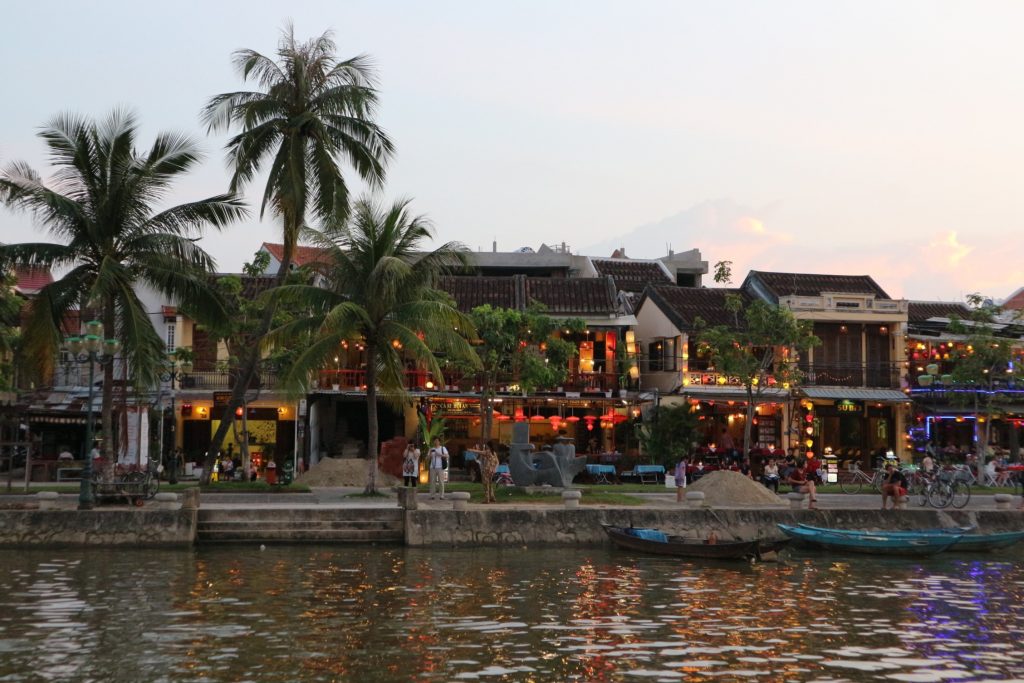
Activities and Attractions in Hoi An Ancient Town
- Walking or cycling around the town, which is a pedestrian zone, and admiring the charming and colorful architecture and street scenes. You can also see some of the historical and cultural landmarks, such as the Japanese Bridge, the Assembly Halls, the Old Houses, and the Museums.
- Shopping and bargaining at the local markets and shops. You can find a variety of goods, such as silk, lanterns, ceramics, paintings, and souvenirs. Furthermore, you can get a custom-made outfit or a pair of shoes from some of the skilled tailors and shoemakers in the town. You can also visit some of the workshops and see how the artisans make their products.
- Taking a boat ride on the Thu Bon River. It offers you a different perspective of the town and the surrounding countryside. You can also see some of the traditional fishing activities, such as net casting and coracle rowing.
- Joining a cooking class. You will learn how to make some of the local specialties, such as cao lau (a noodle dish with pork and herbs), banh xeo (crispy pancake with shrimp and bean sprouts), or com ga (chicken rice). You can also visit the local market and buy fresh ingredients for your dishes. The cooking class is usually organized by some of the restaurants or hotels in the town.
How to Book the Best Tours and Activities to the Hoi An Ancient Town
Are you interested in the history and culture of Hoi An, a well-preserved trading port that dates back to the 15th century? Do you want to see the charming and colorful architecture and street scenes of the town, which reflect the influences of different countries and religions? If so, you should book the best tours and activities to the Hoi An Ancient Town. You will enjoy the scenic and lively atmosphere of the town, as well as the historical and cultural landmarks, such as the Japanese Bridge, the Assembly Halls, the Old Houses, and the Museums. Additionally, you will learn about the history and culture of the Hoi An people and their traditions and customs. You will also have the opportunity to try the delicious cuisine and specialties of Hoi An. Book your Hoi An Ancient Town tour today and get ready for a wonderful experience.
2.3. My Son Sanctuary
My Son Sanctuary is a sacred site of Hinduism that was built by the Champa Kingdom between the 4th and the 13th centuries. The sanctuary is located in a valley surrounded by mountains and forests, in the Quang Nam province, central Vietnam. The sanctuary consists of a cluster of over 70 temples and towers that are dedicated to Shiva and other Hindu deities. The temples and towers are decorated with sandstone sculptures and reliefs that depict scenes from Hindu mythology and legends. Moreover, the sanctuary is a reflection of the spiritual and cultural identity of the Champa people, who were influenced by Indian civilization and culture.
UNESCO inscribed My Son Sanctuary on the UNESCO World Heritage List in 1999 for its cultural and architectural values.
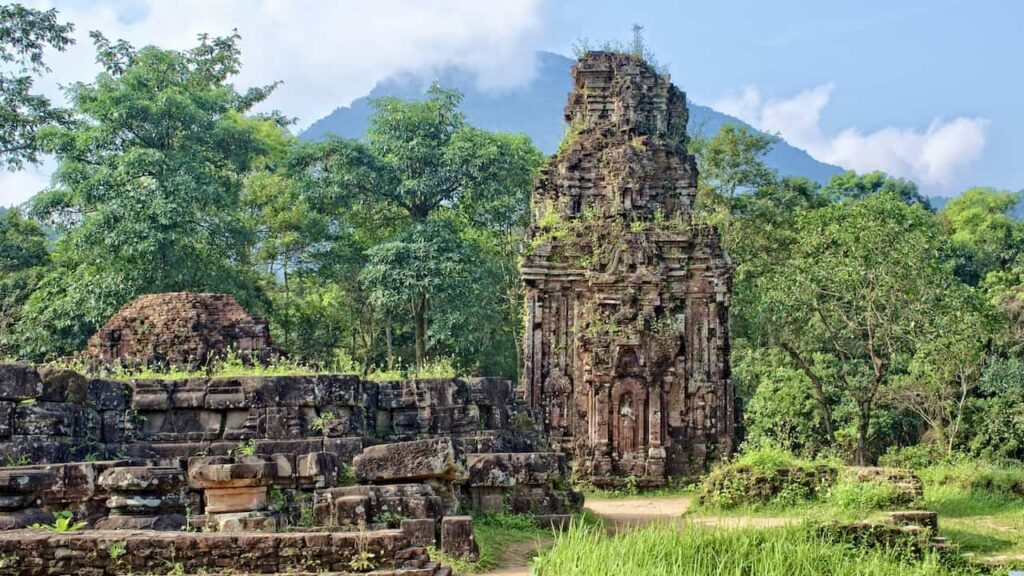
Activities and Attractions in My Son Sanctuary
This site is a cluster of ancient Hindu temples built by the Champa Kingdom between the 4th and the 13th centuries. The temples are dedicated to Shiva and other Hindu deities. They are decorated with sandstone sculptures and reliefs. Some of the activities and attractions that you can enjoy here are:
- Visiting the temple groups. They are divided into 10 zones according to their chronological and stylistic features. Particularly, you can see the different types and designs of the temples. There are the kalan (main tower), the mandapa (entrance hall), the kosagrha (fire house), and the gopura (gate tower). You can also see some of the inscriptions and artifacts that reveal the history and culture of the Champa people.
- Watching the Cham dance performance on the main stage near the temple groups. It is a traditional art form that expresses the beliefs and values of the Cham people. The dance is accompanied by music played with gongs, drums, flutes, and zithers.
- Exploring the nearby villages, where you can see the rural life and culture of the local people. You can also visit some of the handicraft workshops and see how the artisans make pottery, weaving, embroidery, and wood carving. You can also buy some of the souvenirs and products made by the villagers.
- Joining a cycling tour, where you can enjoy the natural beauty and scenery of the area. You can cycle along the country roads and paths, and see the rice fields, mountains, rivers, and forests. You can also stop at some of the historical and cultural sites. For example, the Tra Kieu Church, the Ban Than Tower, and the Kim Bong Carpentry Village.
How to Book the Best Tours and Activities to the My Son Sanctuary
Are you curious about the history and culture of the Champa Kingdom, a powerful Hindu civilization that ruled over central and southern Vietnam from the 4th to the 13th centuries? Do you want to see the impressive temples and towers that are dedicated to Shiva and other Hindu deities, and are decorated with sandstone sculptures and reliefs? If so, you should book the best tours and activities to the My Son Sanctuary. You will enjoy the scenic and peaceful atmosphere of the sanctuary, which is located in a valley surrounded by mountains and forests. You will also learn about the history and culture of the Champa people and their spiritual and artistic achievements. Don’t miss this chance to book your My Son Sanctuary tour today and get ready for a fascinating experience at one of Vietnam UNESCO sites.
2.4. Central Sector of the Imperial Citadel of Thang Long – Hanoi
The Central Sector of the Imperial Citadel of Thang Long – Hanoi is the most important and best-preserved part of the ancient Imperial Citadel of Thang Long. It was the political, cultural, and religious center of Vietnam for almost 13 centuries. The citadel was founded in the 11th century by the Ly Dynasty, who moved the capital from Hoa Lu, Ninh Binh to Thang Long, Hanoi. The citadel was built on the remains of a Chinese fortress dating from the 7th century, on drained land reclaimed from the Red River Delta. Later, the citadel was expanded and modified by successive dynasties, such as the Tran, the Le, the Mac, and the Nguyen, until it was replaced by the Hue Citadel in 1802.
The Imperial Citadel of Thang Long – Hanoi consists of three concentric enclosures: the Capital City, the Imperial City, and the Forbidden City. The Capital City was the outermost enclosure, where the administrative and military functions were located. The Imperial City was the middle enclosure, where the royal palaces, temples, and gardens were located. The Forbidden City was the innermost enclosure, where the emperor and his family lived and worked.
The Central Sector of the Imperial Citadel of Thang Long – Hanoi covers an area of 30 hectares. It also includes the 18 Hoang Dieu Archaeological Site. There are many artifacts and structures from different periods have been excavated, such as wells, ponds, roads, walls, gates, palaces, temples, and altars.
UNESCO inscribed the Central Sector of the Imperial Citadel of Thang Long – Hanoi on the World Heritage List in 2010 for its cultural and historical values.
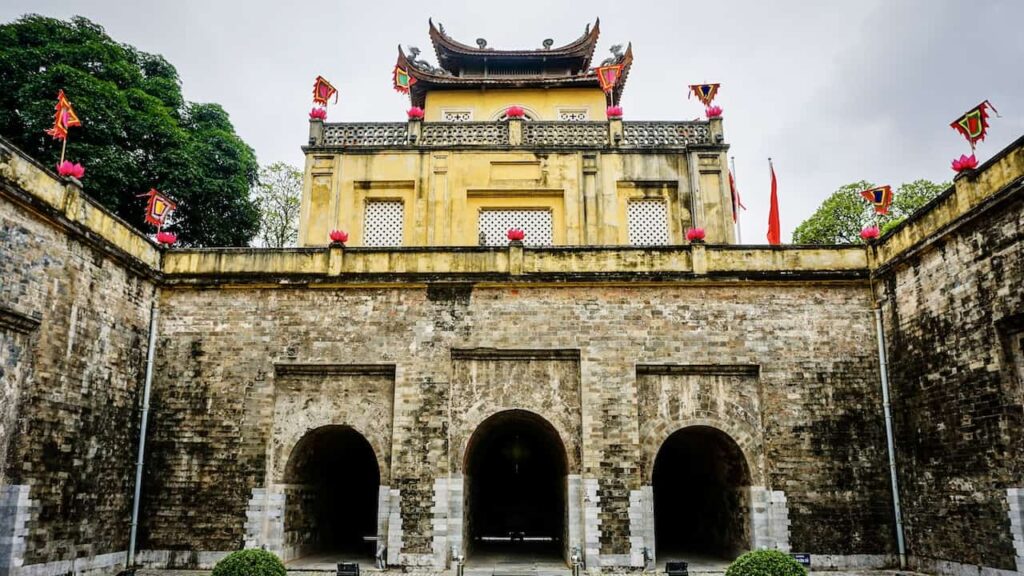
Activities and Attractions in the Central Sector of the Imperial Citadel of Thang Long – Hanoi
If you are interested in exploring the Central Sector of the Imperial Citadel of Thang Long – Hanoi, you can enjoy the following activities and attractions:
- Visiting the Citadel Museum. You can learn more about the history, culture, and architecture of the Thang Long Citadel. You can also see some of the artifacts and relics found on the site. The museum’s location is in the D67 building. It was the headquarters of the Vietnamese military command during the wars against the French and the Americans.
- Walking or cycling around the citadel walls. You can enjoy a panoramic view of the city and the citadel structures. You can also see some of the historical monuments. To elaborate, the Flag Tower, the Doan Mon Gate, the Kinh Thien Palace, the Hau Lau Pavilion, and the Bac Mon Gate. The citadel walls are about 10 km long and you can access from any of the four gates.
- Exploring the 18 Hoang Dieu Archaeological Site. At the place, you can see the remains of ancient buildings and structures from different periods, such as the Ly, the Tran, the Le, and the Nguyen. You can also see some of the original brickwork, stonework, and carvings that reflect the influences of different cultures and religions, such as Buddhism, Taoism, Confucianism, and Hinduism.
2.5. Citadel of the Ho Dynasty
The Citadel of the Ho Dynasty is a 14th-century stone fortress in Thanh Hoa province, central Vietnam. It was built by the Ho family, who ruled over Vietnam from 1400 to 1407. The citadel is an example of a planned and fully defended feudal capital city in Southeast Asia. It’s also a testimony to the flowering of neo-Confucianism in Vietnam.
The citadel was constructed according to the feng shui principles. Also, it was sited in a landscape of great scenic beauty on an axis joining the Tuong Son and Don Son mountains in a plain between the Ma and Buoi rivers. The citadel walls are made of large limestone blocks, some weighing up to 10 tons, that were transported from nearby mountains without the use of mortar or cement. The citadel has four gates, one on each side, and covers an area of 155.5 hectares. Inside the citadel, there are remains of palaces, temples, wells, and ponds. Additionally, the citadel includes the Nam Giao Altar, where the Ho kings performed rituals to worship the heaven and the earth.
UNESCO inscribed the Citadel of the Ho Dynasty on the UNESCO World Heritage List in 2011 for its cultural and architectural values.

Activities and Attractions in Citadel of the Ho Dynasty
If you are interested in exploring the Citadel of the Ho Dynasty, you can enjoy the following activities and attractions:
- Walking or cycling around the citadel walls. It offers a panoramic view of the surrounding landscape and the citadel structures. You can also see some of the local villages and farms along the way. The citadel walls are about 5 km long.
- Exploring the inner citadel. Yes, you can see the remains of the royal palaces, temples, and other buildings. You can also visit the Nam Giao Altar, which is located about 1 km south of the citadel. The altar is a large circular platform surrounded by smaller platforms, where the Ho kings performed ceremonies to pray for peace and prosperity. The altar is also a good spot to watch the sunrise or sunset.
- Joining a cultural tour. You can experience the traditional life and customs of the local people. In particular, you can learn how to make some of the local specialties, such as banh gai (black glutinous rice cake), banh te (steamed rice cake), or nem chua (fermented pork roll). You can also participate in some of the folk games, such as bamboo pole dancing, tug of war, or blindfolded pot smashing.
3. Mixed Heritage Site
Vietnam has only one site that is recognized by UNESCO as a mixed heritage site. In other words, it has both natural and cultural values. This site is the Trang An Landscape Complex, which is located in the Ninh Binh province, near the southern margin of the Red River Delta. The Trang An Landscape Complex is a spectacular landscape of limestone karst peaks permeated with valleys. Many of them partly submerged and surrounded by steep, almost vertical cliffs. The site also contains many archaeological, historical, and religious relics, such as caves, temples, pagodas, and ancient capitals.
3.1. Trang An Landscape Complex
The Trang An Landscape Complex covers an area of 6,172 hectares. It includes four main components: the Hoa Lu Ancient Capital, the Tam Coc – Bich Dong Scenic Landscape, the Trang An Ecological Area, and the Hoa Lu Special-Use Forest. The site is considered to be a living museum of the evolution of the Earth and human civilization in Southeast Asia. It contains evidence of various geological, climatic, and cultural changes over millions of years. Also, the site demonstrates the harmony and adaptation of humans to the natural environment, as well as the diversity and creativity of Vietnamese culture and spirituality.
UNESCO inscribed Trang An Landscape Complex on the World Heritage List in 2014 for its cultural and natural values.
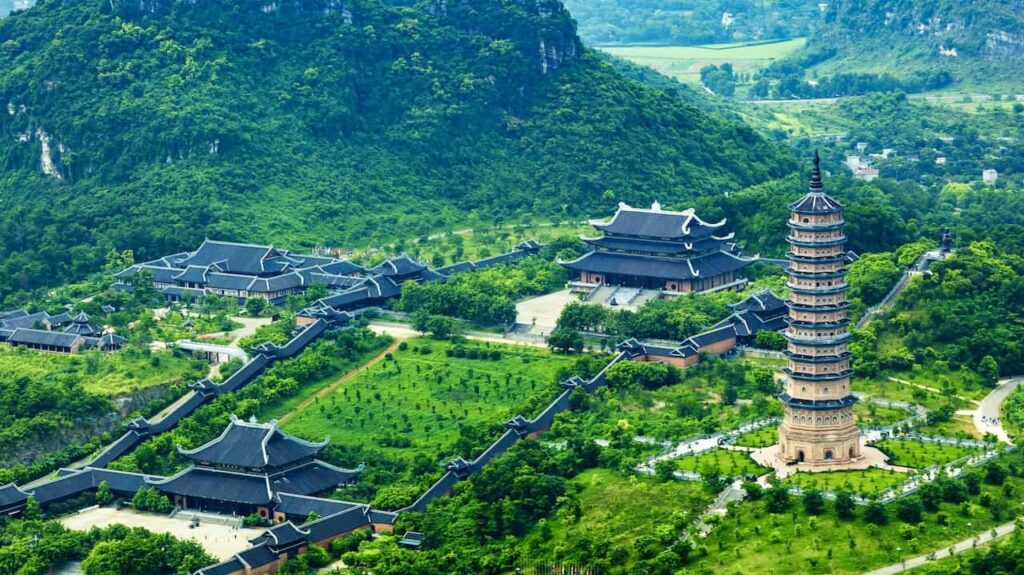
Activities and Attractions in Trang An Landscape Complex
The Trang An Landscape Complex offers a variety of activities and attractions for visitors who want to explore and enjoy the beauty and significance of this mixed heritage site. Some of the activities and attractions that you can enjoy in the site are:
- Taking a boat ride on the Trang An River. You can choose from different routes that take you to different caves, such as the Sang Cave, the Toi Cave, the Nau Ruou Cave, and the Ba Giot Cave. You can also see some of the cultural and historical sites along the river. For example, the Tran Temple, the Khong Residence, and the King Kong film set.
- Visiting the Hoa Lu Ancient Capital. It was the first capital of Vietnam from the 10th to the 11th centuries. You can see the remains of the royal palaces, temples, and citadels of the Dinh and Le dynasties. You can also learn about the history and culture of the ancient Vietnamese people and their struggles against foreign invaders.
- Exploring the Tam Coc – Bich Dong Scenic Landscape, which is also known as the “Ha Long Bay on land”. Especially, you can take another boat ride on the Ngo Dong River, which flows through Hang Ca Cave, Hang Hai Cave, and Hang Ba Cave. In addition, you can admire the rice fields, the limestone mountains, and the rural villages along the river. You can also visit the Bich Dong Pagoda, which is a complex of three pagodas built on different levels of a mountain.
- Hiking or biking in the Hoa Lu Special-Use Forest, which is a protected area of natural forest and biodiversity. Furthermore, you can see many rare and endemic species of plants and animals. For example, the Cat Ba Langur, the Golden-headed Langur, and the Cat Ba Leopard Gecko.
How to Book the Best Tours and Activities to the Trang An Landscape Complex
Are you amazed by the beauty and diversity of the Trang An Landscape Complex, a UNESCO World Heritage Site that combines natural and cultural values? Do you want to see the stunning landscape of limestone karst peaks, valleys, caves, and rivers, as well as the historical and religious relics of the ancient Vietnamese people? If so, you should book the best tours and activities to the Trang An Landscape Complex. You will enjoy the scenic and tranquil atmosphere of the complex, as well as the rich history and culture of the site. You will also learn about the evolution of the Earth and human civilization in Southeast Asia, as well as the harmony and adaptation of humans to the natural environment. Don’t miss this chance to book your Trang An Landscape Complex tour today and get ready for a remarkable experience at one of the eight Vietnam UNESCO sites.
Why You Should Visit the Vietnam UNESCO Sites at Least Once in Your Lifetime
Vietnam UNESCO Sites are more than just tourist attractions. They are the living testimony of the history, culture, and nature of Vietnam and the world. By visiting these sites, you will not only enjoy the scenic views and the architectural marvels, but also learn about the stories and the meanings behind them. You will also contribute to the preservation and promotion of these sites, which are the heritage of humanity. If you are looking for a unique and unforgettable travel experience, you should definitely add these Vietnam UNESCO Sites to your bucket list.
The Broad Life introduces to you great, inspirational books for your wanderlust. They aren’t just simple travel, each book recounts the author’s journey to discover and learn many awesome things from new civilizations and places.
> READ MORE: THE BEST TRAVEL BOOKS OF ALL TIME
Note:
This post contains affiliate links from which I can earn commissions if you use services or buy products from the blog’s partners. If you love the blog, please use the services or buy the products. In that way, you give me support for the blog’s maintenance and development. I appreciate it a lot and thank you for that!
IF YOU LOVE THIS LIST AND GUIDE OF VIETNAM UNESCO WORLD HERITAGE SITES, “PIN IT” NOW!
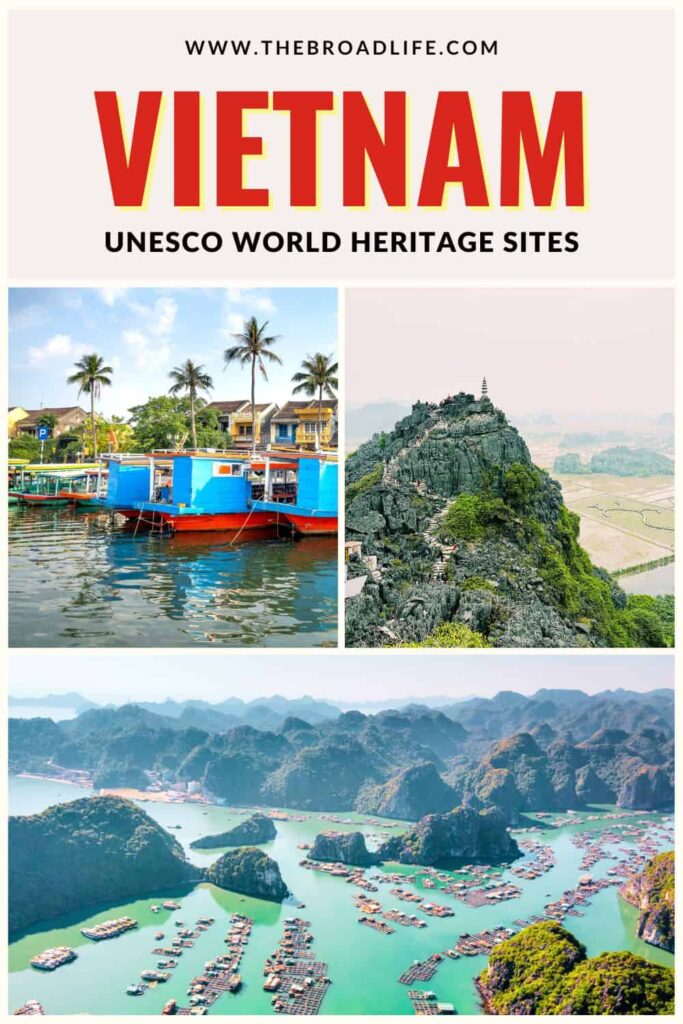
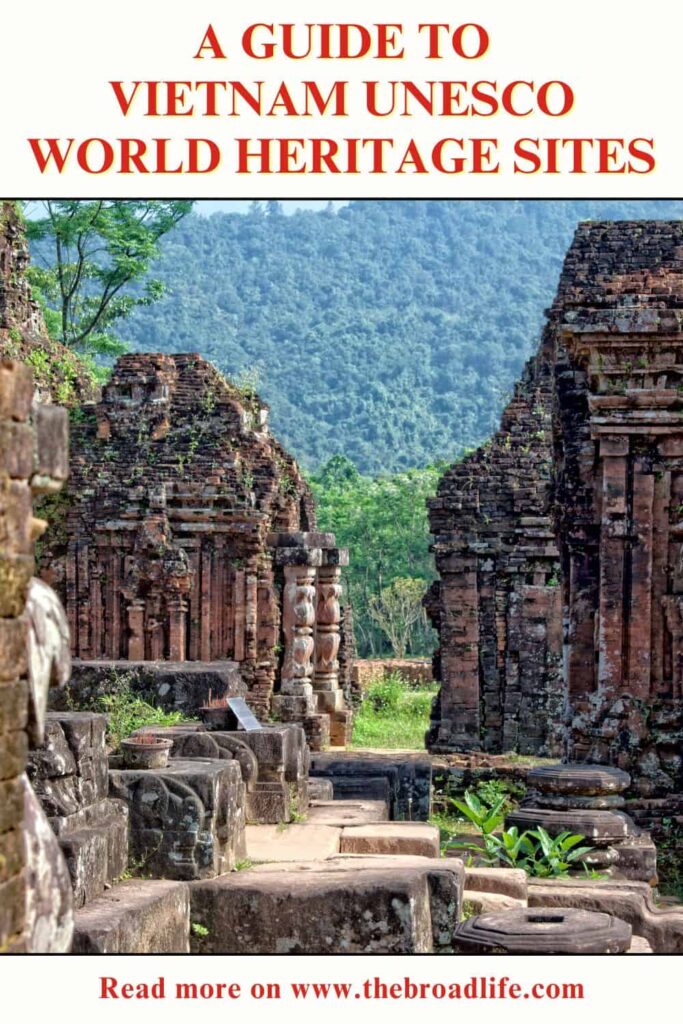
8 Comments
-
-
Nayna Kanabar
Vietnam looks like an amazing country with so many beautiful cultural and heritage places to see.I have it added to my bucket list.
-
Ntensibe Edgar
Nnniiicccceeeee…i didn’t know any of these heritage sites. ke bang national park is the one i wanna visit first, when i am here.
-
Melanie E
These locations are all so beautiful. It’s great that there are tours and activities at the various sites that we can take part in. I would really love to go see all of these especially Ke Bang National Park as there is plenty to do and see there.
-
Marysa
These are all beautiful places. I would love to visit any of them! It is nice that these are world heritage sites and being recognized and cared for.


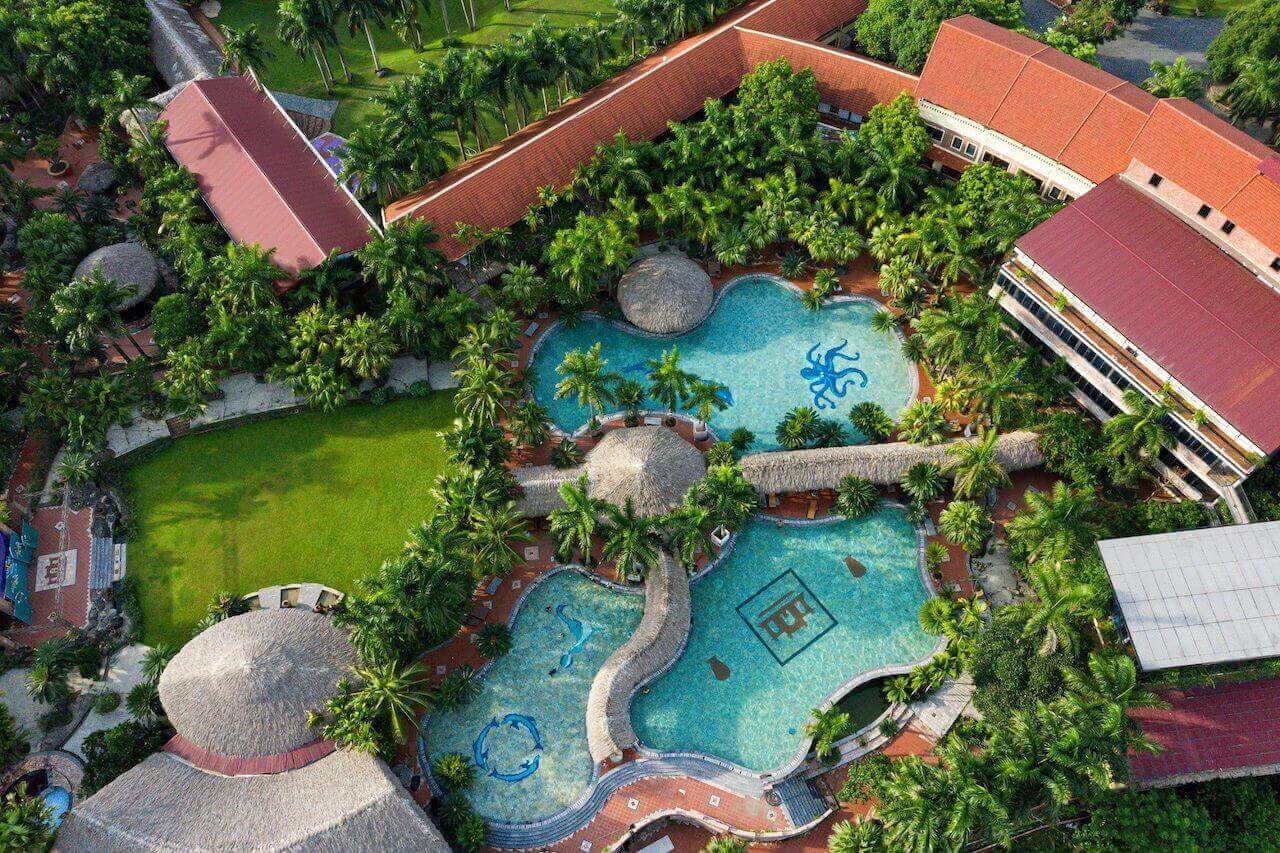
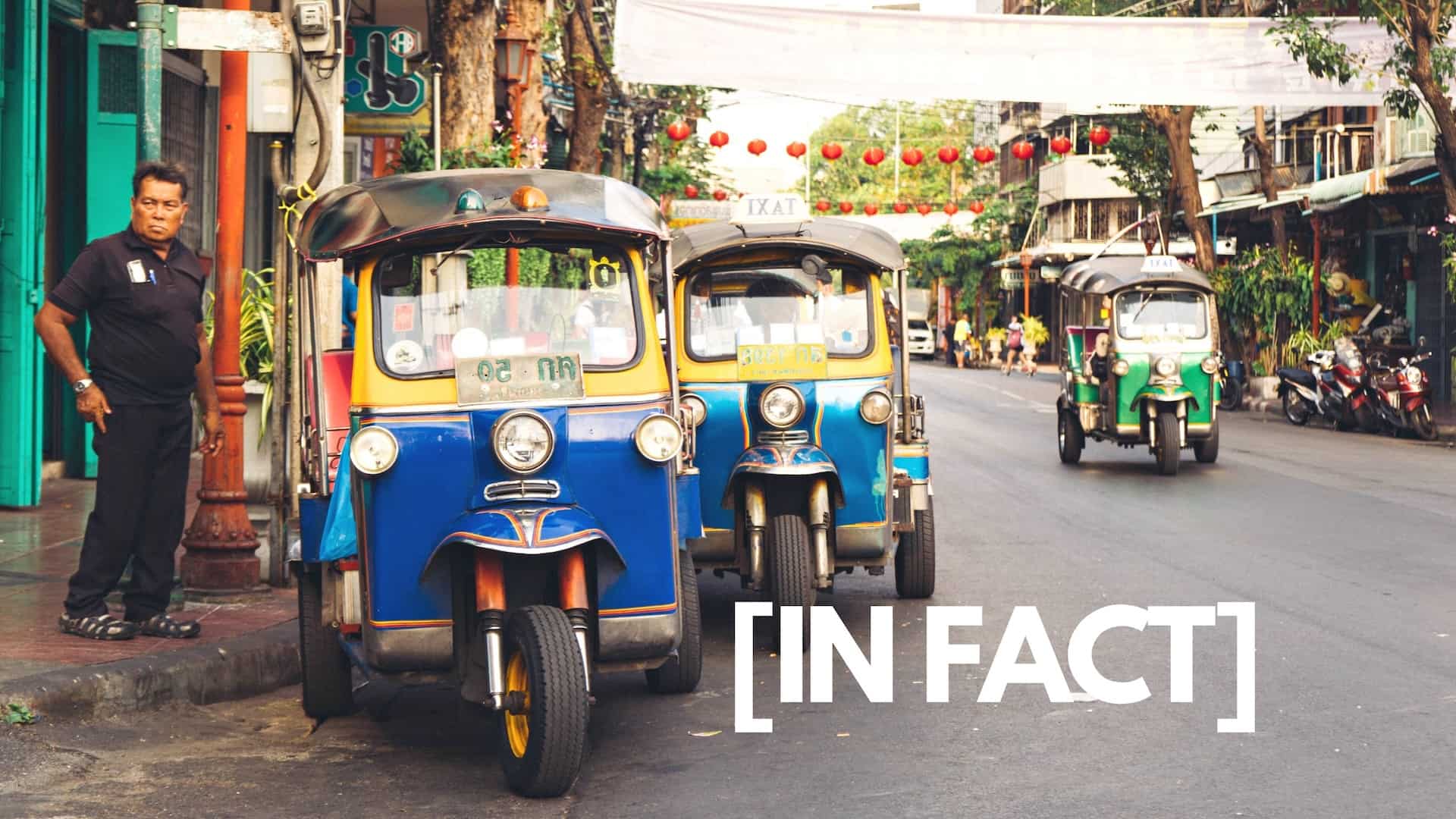
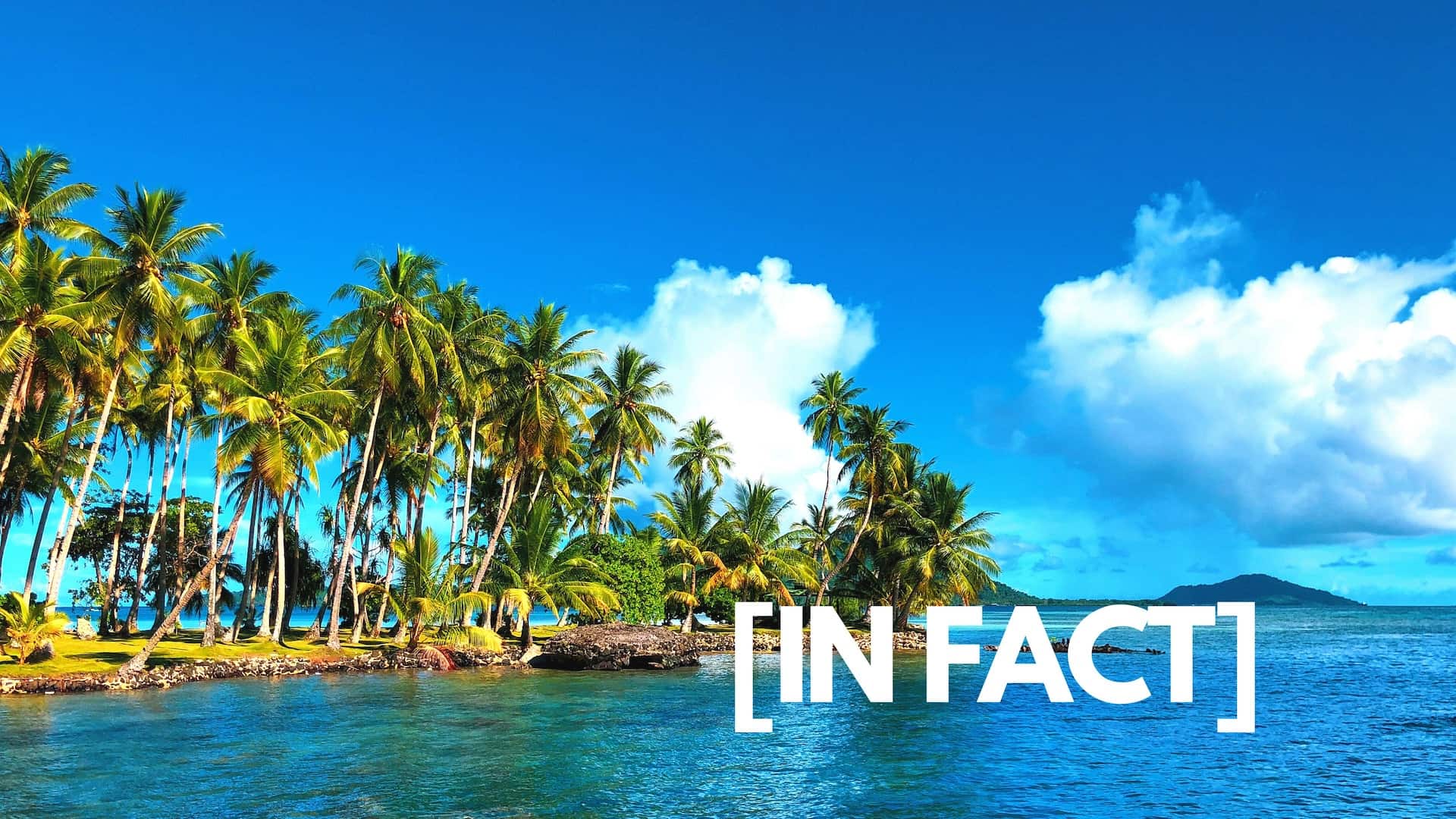

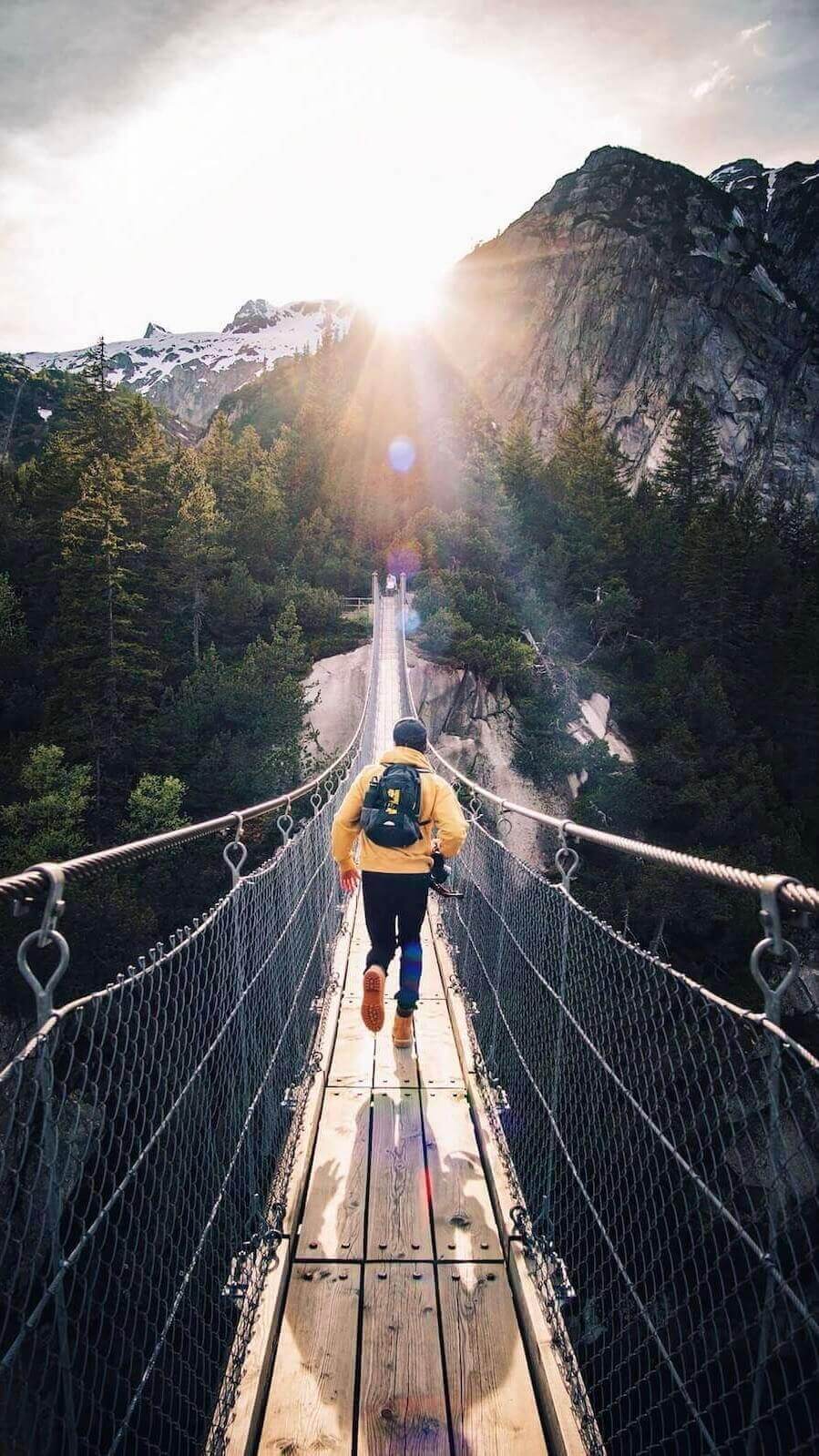
Stephanie
I was not aware there were so many Unesco sites in Vietnam – but it makes sense as it is a beautiful and culturally rich country. Would enjoy seeing all these in person.